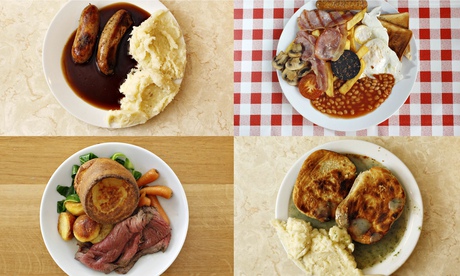專欄作者
美國工業化養殖的惡果
紀思道 2014年03月24日
我們的食品來自哪裡?這個問題的答案常常是泰森食品(Tyson Foods)——美國的肉類加工廠。
泰森食品是
美國100強企業之一,
一周可宰殺13.5萬頭牛、39.1萬頭豬,以及4100萬隻雞——數字讓人震驚。幾乎所有美國人都經常吃泰森食品生產的肉類——無論是在家、麥當勞、食堂,還是養老院。
「即使某塊肉不是泰森公司生產的,消費者的選擇實際上只不過是經過同樣流程包裝成商品的牛肉、雞肉和豬肉而已。它們都是通過泰森開創的系統生產出來的,」報道工業化農業生產的資深記者克里斯托弗·萊昂納德(
Christopher Leonard)在他的新書《肉製品勾當》(The Meat Racket)中寫道。這本書是關於泰森食品公司的。
萊昂納德在書中說,以泰森食品為首的幾家公司控制着我們的
肉製品行業,它們的種種做法對動物和人類的影響引發了擔憂,破壞了美國鄉村原本的結構。許多養雞的農戶並不擁有他們所餵養的雞,也不知道飼料里有什麼。他
們只是按照與泰森的合同來飼養這種家禽,許多農民難以維持生計。
由於擔心由多家大企業壟斷的肉製品產業主導了美國的鄉村,奧巴馬總統推出了一項始於2010年的行動,目的是加強對肉製品行業的反壟斷監管,讓農民起訴肉類加工企業的過程更容易。其目標很宏大:創造「全新的鄉村經濟」,造福每一個農民。
萊昂納德寫道,泰森食品的遊說者利用其在國會的友人,破壞了奧巴馬政府的監管努力,奧巴馬的行動遭遇了「慘不忍睹的失敗」。
工業化農場帶來了大量災難性的後果,但必須承認,它替我們
省了錢。當赫伯特·胡佛(Herbert
Hoover)總統夢想着讓「每口鍋里都有一隻雞」的時候,雞肉還是一種奢侈的食物,價格比牛肉貴。根據全美養雞理事會(National
Chicken
Council)的數據,按照今天的幣值計算,1930年,一磅(0.45千克)宰殺乾淨的雞肉價格為6.48美元(約合39.7元人民幣)。去年,雞肉
的零售價為每磅1.57美元,比牛肉便宜多了,這跟泰森食品有一定關係。
雞肉價格下降的一個原因是,科學的飼養方法縮短了把雞飼養到可以宰殺所需要的時間。從1925年以來,生長期縮短了超過一半,與此同時,每隻雞的體重增加了一倍。生產一磅雞肉所需的飼料總量也大大減少。
但是:
這種工業化的農業體系還在三個方面產生了巨大代價。
首先,它是動物們的災難。目前的飼養方式讓雞長出了巨大的胸脯,到成年時它們就會常常向前摔倒,難以呼吸或站立。
「這些家禽活着實際上就是受罪,」美國愛護動物協會(American Society for the Prevention of Cruelty to Animals)的勞麗·比徹姆(Laurie Beacham)說。該機構稱,把雞養得「膨脹到爆炸」
本質上是極其殘忍的。
第二,工業化農業危害我們的健康。約翰·霍普金斯大學布隆
博格公共衛生學院(Johns Hopkins Bloomberg School of Public Health)的羅伯特·馬丁(Robert
Martin)指出,一個1萬頭豬的農場製造出的糞便,相當於一個4萬人口的小城市,但養豬業可沒有廢物處理工廠。馬丁說,的確,北卡羅萊納州一個縣的豬
製造的廢物,相當於紐約市全部人口生產廢物的一半。
另一個健康隱患是,為了讓家畜和家禽在擁擠骯髒的環境中迅速成長,它們的飼料中常常加入了抗生素。這可能會造成具有抗生素耐藥性的感染,每年有兩百萬美國人因此患病(對病人使用過量抗生素也是一個原因,但美國五分之四的抗生素
用在了農場飼養的動物身上)。
第三,這種工業化的模式導致了美國鄉村的空心化。鄉村的中心地區只剩下幾家大公司和無數在邊緣掙扎的人們。
萊昂納德在書中寫道,過去40年里,在泰森公司運營的縣
裡,有68%的縣人均收入增速低於該州的平均水平。我們或許會以為美國的鄉村到處是紅色穀倉,一派美好的田園景象,如同《華生一家》(The
Waltons)中的場景,但如今,它也是一塊失業、貧窮、絕望和毒品肆虐的土地。
批評當前的工業化農業的模式很容易,提出一個可行的替代性方案則要難得多。我成長於
俄勒岡州低效的家庭農場,但回到那種農場所代表的農村結構並不是解決辦法。那樣的話,我們會回到一磅雞肉價格6.48美元的時代。
但是,首先需要深刻地認識到,我們工業化的食品體系是不健
康的。這種體系讓一些人獲得了收益,但它造成的健康和環境成本則要全社會承擔。它讓股東獲得了回報——泰森食品的股價自2009年初以來提高了三倍。但與
泰森有關的人和動物,往往處境悲慘。工業化生產的肉類有一種苦澀的餘味。
翻譯:王湛
Op-Ed Columnist
The Unhealthy Meat Market
By NICHOLAS KRISTOF March 24, 2014
Where does our food come from? Often the answer is Tyson Foods, America’s meat factory.
Tyson,
one of the nation’s 100 biggest companies,
slaughters
135,000 head of cattle a week, along with 391,000 hogs and an
astonishing 41 million chickens. Nearly all Americans regularly eat
Tyson meat — at home, at McDonalds, at a cafeteria, at a nursing home.
“Even if Tyson did not produce a given piece of
meat, the consumer is really only picking between different versions of
the same commoditized beef, chicken, and pork that is produced through a
system Tyson pioneered,”
says Christopher Leonard, a longtime agribusiness journalist, in his new book about Tyson called “The Meat Racket.”
Leonard’s book argues that a
handful of companies, led by Tyson, control our meat industry in ways
that raise concerns about the impact on animals and humans alike, while
tearing at the fabric of rural America. Many chicken farmers don’t even
own the chickens they raise or know what’s in the feed. They just raise
the poultry on contract for Tyson, and many struggle to make a living.
Concerned by the meat
oligopoly’s dominance of rural America, President Obama undertook a push
beginning in 2010 to strengthen antitrust oversight of the meat
industry and make it easier for farmers to sue meatpackers. The aim was
grand: to create a “new rural economy” to empower individual farmers.
Big Meat’s lobbyists used
its friends in Congress to crush the Obama administration’s regulatory
effort, which collapsed in “spectacular failure,” Leonard writes.
Factory farming has plenty
of devastating consequences, but it’s only fair to acknowledge that it
has benefited our pocketbooks. When President Herbert Hoover dreamed of
putting “a chicken in every pot,” chicken was a luxury dish more
expensive than beef. In 1930, whole dressed chicken retailed for $6.48 a
pound in today’s currency, according to
the National Chicken Council. By last year, partly because of Tyson, chicken retailed for an average price of $1.57 per pound — much less than beef.
Costs came down partly
because scientific breeding reduced the length of time needed to raise a
chicken to slaughter by more than half since 1925, even as a chicken’s
weight doubled. The amount of feed required to produce a pound of
chicken has also dropped sharply.
And yet.
This industrial agriculture system also has imposed enormous costs of three kinds.
First, it has been a
catastrophe for animals. Chickens are bred to grow huge breasts so that
as adults they topple forward and can barely breathe or stand.
Second, factory farming
endangers our health. Robert Martin of the Johns Hopkins Bloomberg
School of Public Health notes that a farm with 10,000 hogs produces as
much fecal waste as a small city with 40,000 people, but the hog
operation won’t have a waste treatment plant. Indeed, the hogs in a
single county in North Carolina produce half as much waste as all the
people in New York City, Martin says.
Third, this industrial
model has led to a hollowing out of rural America. The heartland is left
with a few tycoons and a large number of people struggling at the
margins.
Leonard writes in his book
that in 68 percent of the counties where Tyson operates, per capita
income has grown more slowly over the last four decades than the average
in that state. We may think of rural America as a halcyon pastoral of
red barns and the Waltons, but today it’s also a land of unemployment,
poverty, despair and methamphetamines.
But a starting point is to
recognize bluntly that our industrial food system is unhealthy. It
privatizes gains but socializes the health and environmental costs. It
rewards shareholders — Tyson’s stock price has quadrupled since early
2009 — but can be ghastly for the animals and humans it touches.
Industrial meat has an acrid aftertaste.














